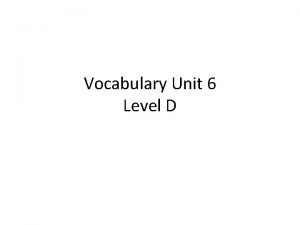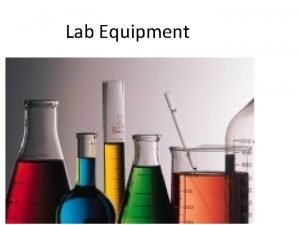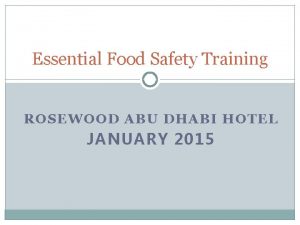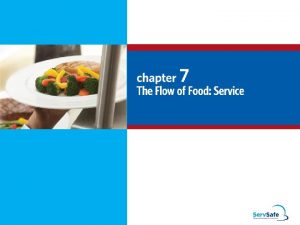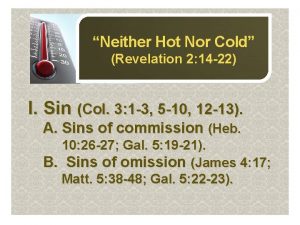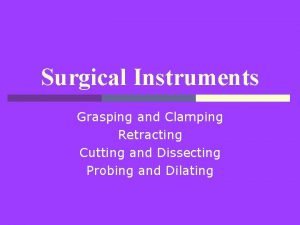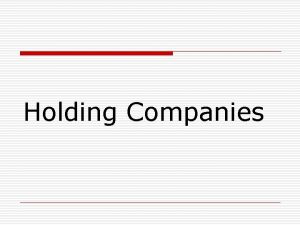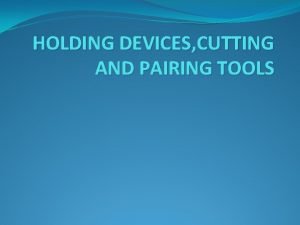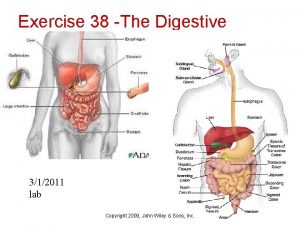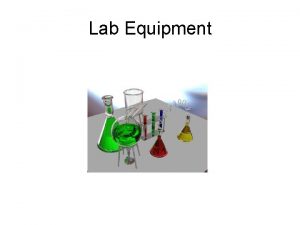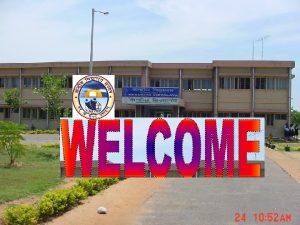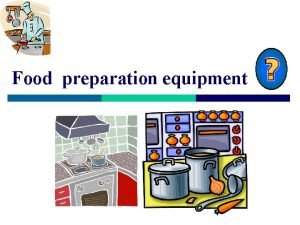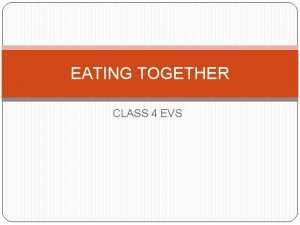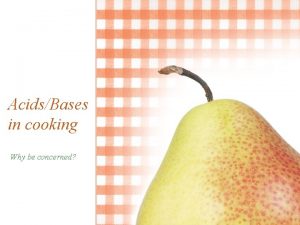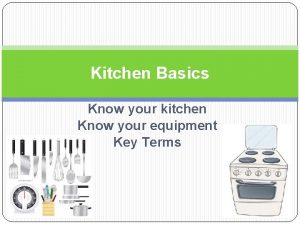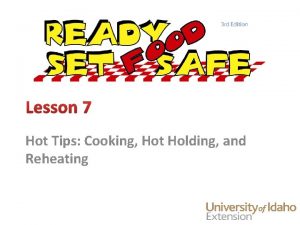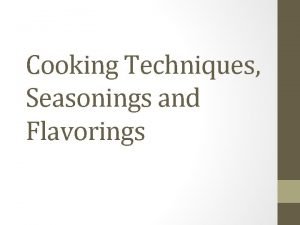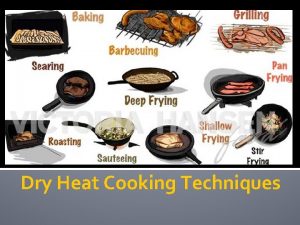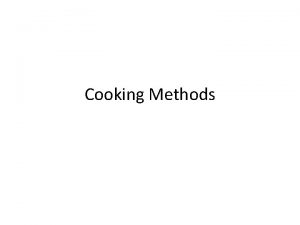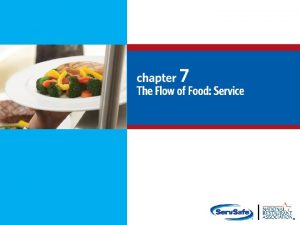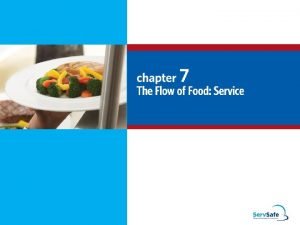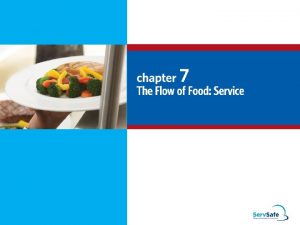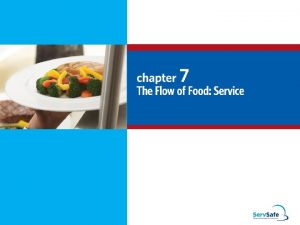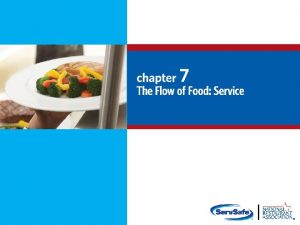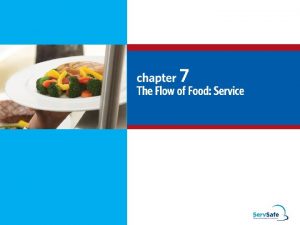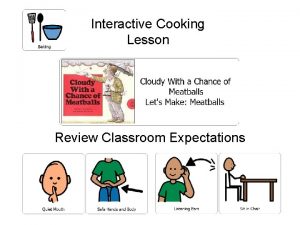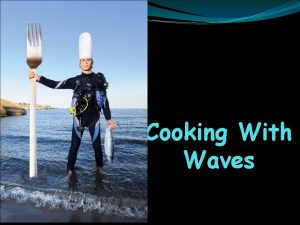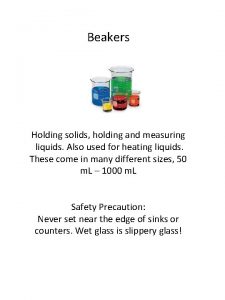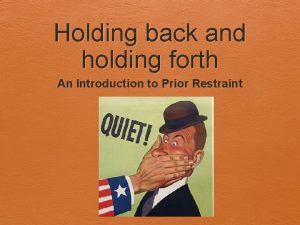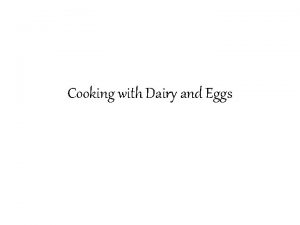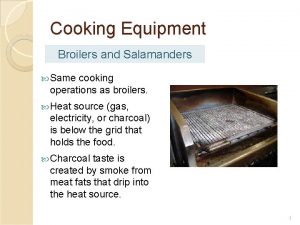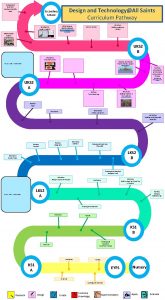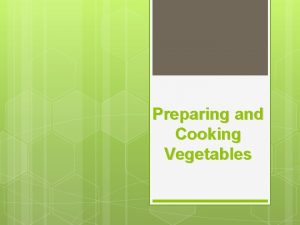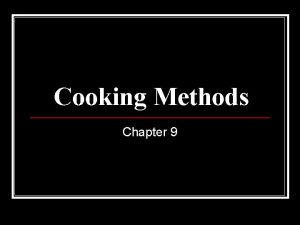Lesson 7 Hot Tips Cooking Hot Holding and






















- Slides: 22

Lesson 7 Hot Tips: Cooking, Hot Holding, and Reheating 1

Keeping Food Safe Includes: w Avoiding temperatures where bacteria can grow w Cooking raw animal foods to recommended temperatures to destroy pathogens 2

Avoid The Danger Zone 41ºF - 135ºF 3 135°F 41°F

Time and Temperature Relationship The longer time a food is in the Danger Zone 4 = The greater the risk of people getting sick

4 -Hour Rule Don’t leave PHF in the Danger Zone for more than a total of 4 hours. 5

The Batch Method Prepare smaller batches + + Instead of one large batch 6

Required Minimum Cooking Temperatures Type of Food Idaho Food Code Section 3 -401. 11 & 3 -401. 12 Beef, Pork, Lamb, Fish, 145ºF for 15 seconds Eggs* 7 Injected Meat, Ground Meat and Fish 155ºF for 15 seconds Poultry, Wild Game, Stuffed Meats, Microwaved Foods** 165ºF for 15 seconds *If eggs are prepared for hot holding, minimal cooking temperature is 155ºF. **It must be allowed to stand for 2 minutes.

Required Hot Holding Rules w Never use a holding unit (steam table, bain -marie, or chafing dish) to cook food. w Keep hot foods at 135°F or higher in a holding unit capable of maintaining this temperature. w Check temperature at least every 4 hours with a clean and sanitized thermometer. 8

Holding Units Chafing Dish www. carlislefsp. com Steam Table www. jacoblicht. com bain-marie www. kb-catering. co. uk 9

Required Reheating Rules w Reheat food within 2 hours to 165°F for 15 seconds. w Do not use a slow cooker or holding unit to reheat food. w Stir food and check temperature in several places. 10 www. rivalproducts. com

Video Clip: Thermometers 11 Source: First Day…Every Day Basics for Food Service Assistants, National Food Service Management Institute, funded by a grant from USDA, 800 -321 -3054, www. nfsmi. org.

Bimetallic Coil (Dial) Thermometer Insert to dimple (2 1/2 inches) for accurate reading 12

Digital Thermometers Electronic Thermometer Digital Instant-Read Insert 1/2 inch for accurate reading 13

Unacceptable Thermometers Glass Thermometers www. homewaredirect. com 14

Using a Thermometer w Insert into the thickest part of the food w Avoid letting thermometer touch the pan, bone, or fat w Let the temperature reading stabilize before taking the reading. 15

Clean and Accurate Thermometers w Wash and sanitize thermometers and protective sheaths before and after each use. w Check thermometer accuracy regularly and whenever it is dropped. 16

Checking Accuracy and Calibrating in Ice Water Slurry w Use a slurry with equal parts ice and water w Allow reading to stabilize w If dial does not read 32ºF, change using hex adjusting nut 17

Optional Activity: Calibrating a Thermometer 18

Activity: “Safe Eats” Case Studies Read the case studies and discuss whether food was properly prepared. What would you change? w. The Cubs’ Food Booth: Bonus or Bust? w. The Catered Buffet: Chaos or Celebration? w. The “Meats” Lab: Memorable or Miserable? 19

Understanding Check! w What is the temperature Danger Zone? ºF 41º - 135 w How long can PHF safely stay in the Danger Zone temperature range? 4 hours, ed d r a c s i d t be s u m t i then w What method involves preparing smaller amounts of food at a time instead of larger ones? d etho m h c t a B 20

Understanding Check! What are the cooking temperatures for… s d n o c e s 5 5°F for 1 w Chicken? 16 s d n o c e s 5 w A salmon fillet? 145°F for 1 w Microwaved soup? 165°F s d n o c e s w A hamburger? 155°F for 15 21

Understanding Check! w How far must a dial thermometer be inserted into a food to get an accurate reading? es h c n i ½ 2 w When should thermometers be cleaned and sanitized? e Before s u h c a e r and afte nge a h c w How is a dial thermometer , F º 32 d d a a e r e t h o e n h t s der doe calibrated? n t i u f t I u. n y r ur ing 22 l s ust e j c d i a n i x e e h c Pla the g n i s u e tur tempera eter m o m r e of the th
 Vocabulary workshop level d unit 6
Vocabulary workshop level d unit 6 Used to pick up or hold hot objects
Used to pick up or hold hot objects Used for heating of stable solid compounds and elements
Used for heating of stable solid compounds and elements Hot holding temperature in dubai
Hot holding temperature in dubai When holding food without temperature control
When holding food without temperature control White hot vs red hot temperature
White hot vs red hot temperature Hot metal forming
Hot metal forming Perbedaan hot lava dan hot lava volcano
Perbedaan hot lava dan hot lava volcano Be either hot or cold
Be either hot or cold Burlisher clamp uses
Burlisher clamp uses Transfer forceps uses
Transfer forceps uses Holding company for maritime and land transport
Holding company for maritime and land transport Subsidiary and holding company
Subsidiary and holding company Slideplayer
Slideplayer Examples of pairing tools
Examples of pairing tools Serves as a mixing chamber and holding reservoir
Serves as a mixing chamber and holding reservoir Triangular file uses in laboratory
Triangular file uses in laboratory Used to transport hot beakers
Used to transport hot beakers Importance of cooking
Importance of cooking Auxiliary cooking equipment examples
Auxiliary cooking equipment examples Cooking and eating together in gurudwara
Cooking and eating together in gurudwara Acids and bases in cooking
Acids and bases in cooking Cooking tools and equipment
Cooking tools and equipment
